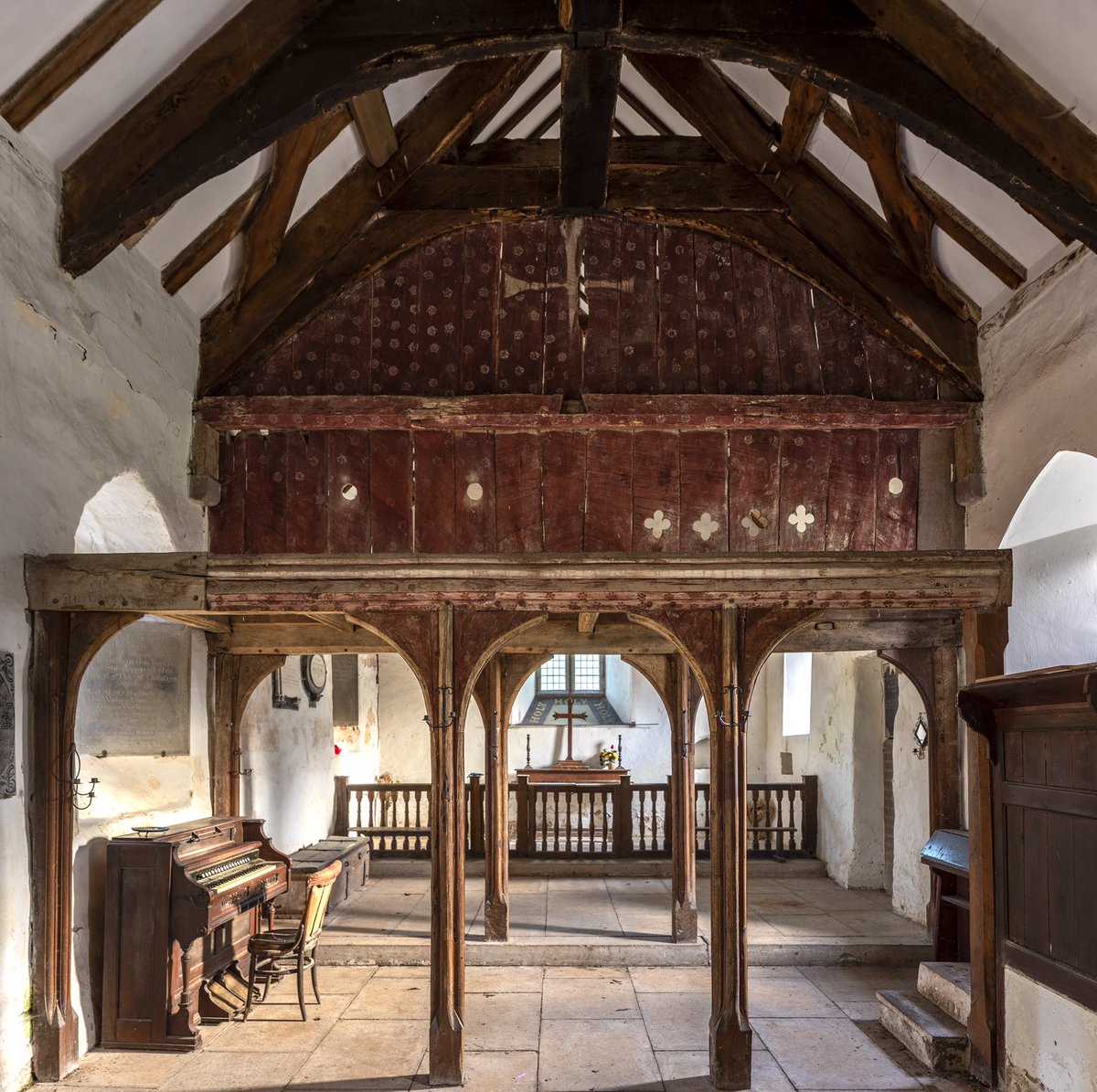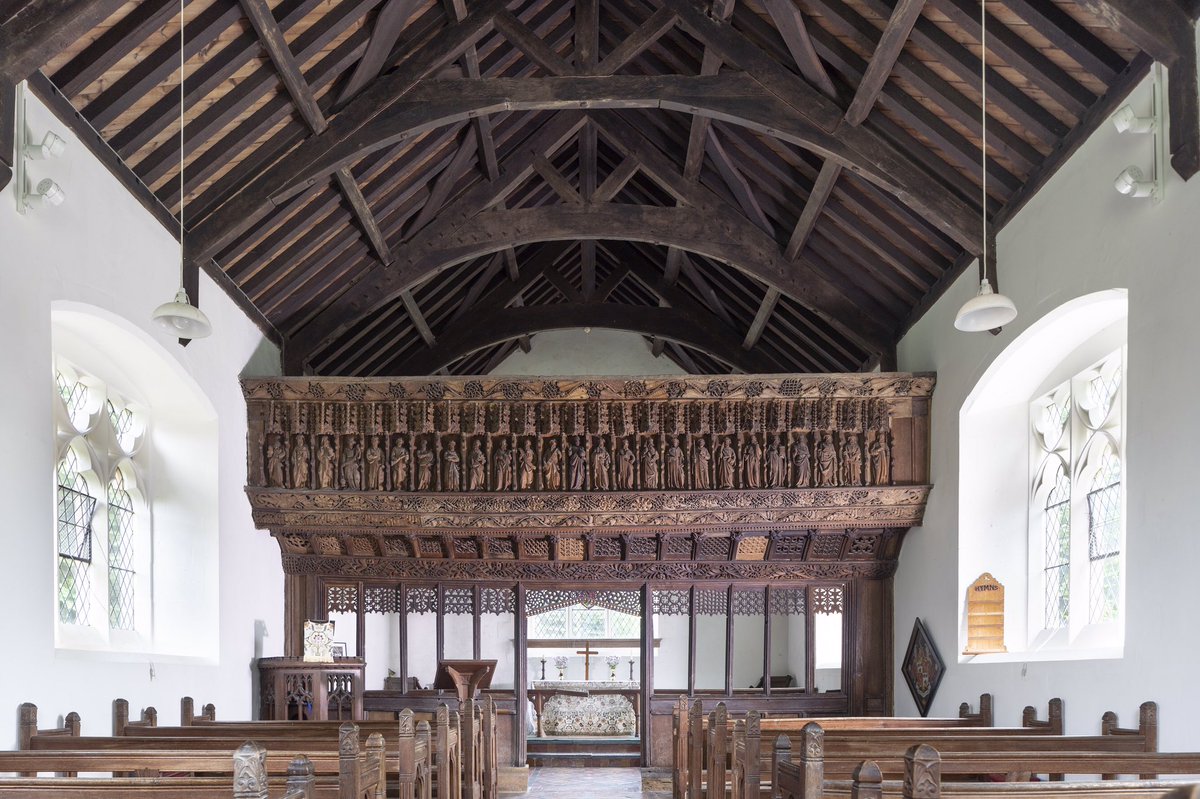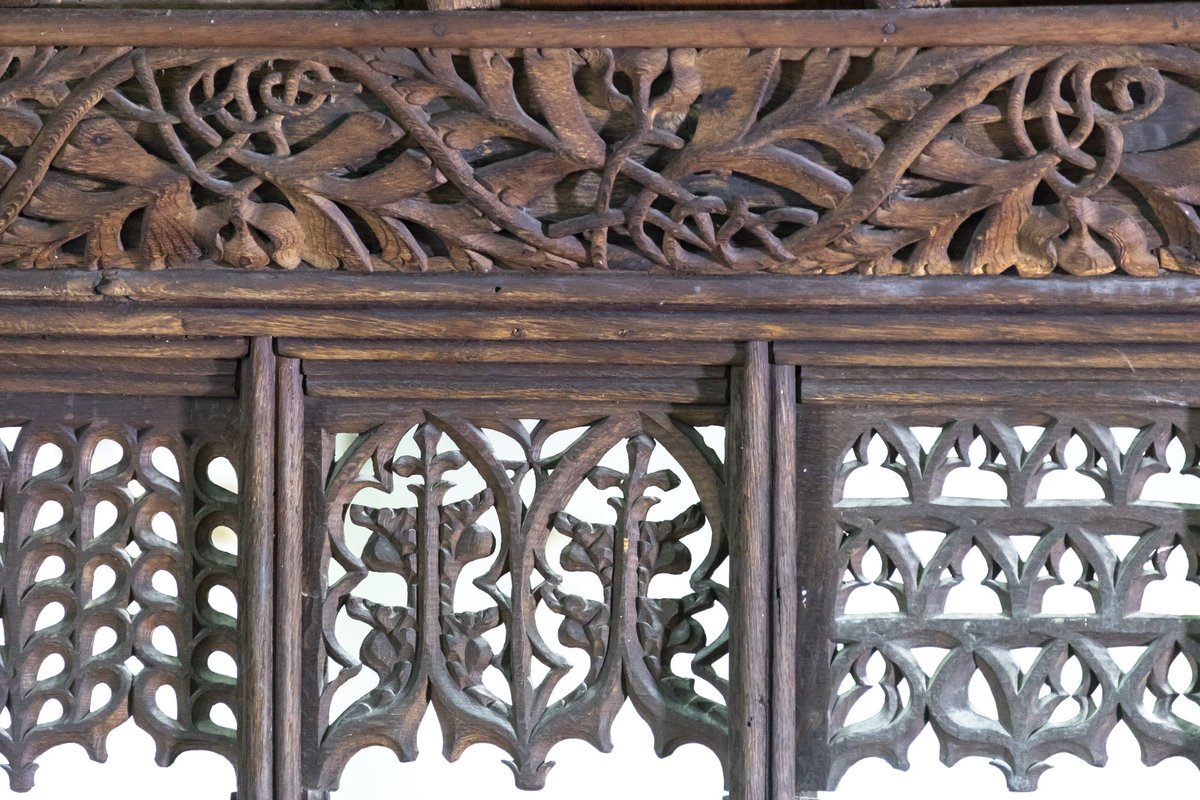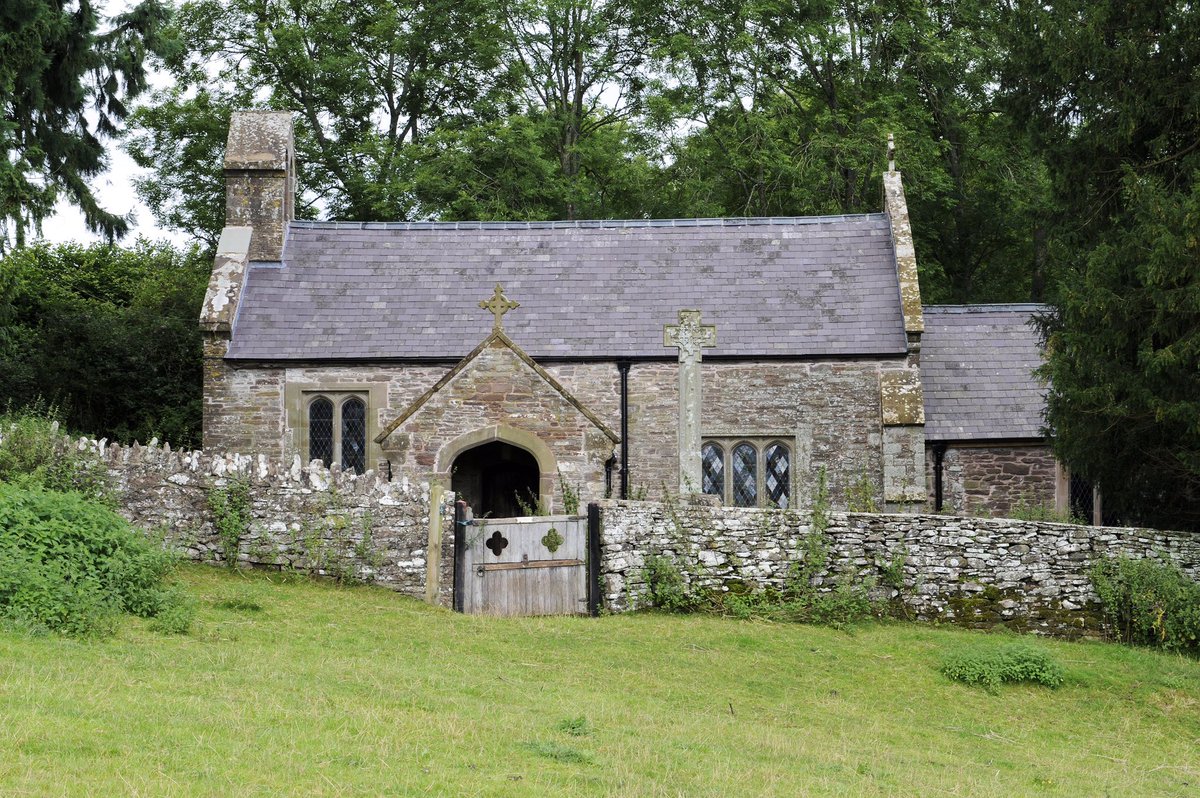
There are remains of roodscreens in ~300 churches in Wales. They were constructed in a short period: two generations either side of 1500, and take three forms: veranda, coved and vaulted.
This survival at Llanelieu is the most complete example of a veranda loft in Wales.
#thread
This survival at Llanelieu is the most complete example of a veranda loft in Wales.
#thread

Towards the of last year the @RCAHMWales published, Painted Temples: Wallpaintings and Rood-screens in Welsh Churches, 1200–1800 by Richard Suggett. For information and images, this book is a treasure trove.
Order it here: bit.ly/3BwgxmE
2/
Order it here: bit.ly/3BwgxmE
2/

One chapter deals exclusively with rood screen, which in Wales are distinctive not only for their “lavish enrichment, fluent decoration and curious carvings”, but also for the literary dimension – as several screens had poems written about them.
3/
3/

These poems are a great resource for their descriptions of the screens. They had a devotional aspect to them, and were also used to attract pilgrims to the church. (e.g. the late 14th-century poem Cwydd i'r grog o gaer by Dafydd ap Gwilym dedicated to the rood at Carmarthen.)
4/
4/
But the Welsh roodscreen’s popularity was short lived. In the 1550s, the figures were removed. By 1561 there was a royal order to reduce lofts to the top of the screen. More destruction occurred in 1600s. Then again in the re-orderings and restorations of the 1700 and 1800s.
5/
5/

In Suggett’s book, he describes an incident in Welshpool in the 1730s, when parishioners petitioned for the removal of their screen, as people were congregating there “under pretence of psalm singing”… but were “spitting upon people’s heads below”.
6/
6/

What survives are just "crumbs from a once rich table".
We have 8 Welsh rood screens in our care. You can read more about them in this post we wrote a while ago:
7/7
We have 8 Welsh rood screens in our care. You can read more about them in this post we wrote a while ago:
7/7
https://twitter.com/friendschurches/status/1266975585622020097
Bonus tweet:
Here’s a late 19th-century painting of Llanelieu church, Powys by FWAT Armstrong 1849-1920 (via Art UK). I love that white-haired old man in a pew to the left.
It was a few looks before I spotted him, almost started, like he knew I was looking but I didn’t see him.
Here’s a late 19th-century painting of Llanelieu church, Powys by FWAT Armstrong 1849-1920 (via Art UK). I love that white-haired old man in a pew to the left.
It was a few looks before I spotted him, almost started, like he knew I was looking but I didn’t see him.

• • •
Missing some Tweet in this thread? You can try to
force a refresh





















